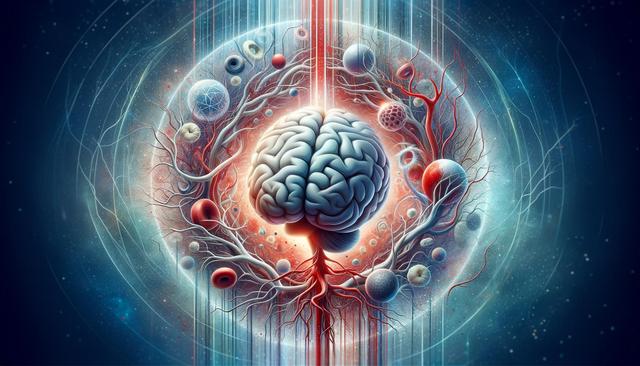What Causes a Stroke?
A stroke occurs when the blood supply to part of the brain is interrupted or reduced, preventing brain tissue from getting the oxygen and nutrients it needs. This can lead to brain cells starting to die within minutes. There are two main types of strokes: ischemic stroke and hemorrhagic stroke. An ischemic stroke, which is the more common type, is caused by a blockage in an artery leading to the brain. A hemorrhagic stroke, on the other hand, happens when a blood vessel in the brain bursts, leading to bleeding in or around the brain.
Common causes and risk factors for stroke include:
- High blood pressure
- Smoking
- Diabetes
- High cholesterol
- Atrial fibrillation
- Obesity
Understanding the underlying causes is key to prevention and early intervention, which can significantly improve outcomes.
How a Stroke Affects the Brain
The effects of a stroke depend on the area of the brain that is affected and the severity of the damage. Because different parts of the brain control different functions such as movement, speech, and memory, the impact of a stroke can vary widely. When brain cells die due to lack of oxygen, the functions controlled by that area of the brain may be lost or impaired.
Some potential effects of a stroke include:
- Paralysis or weakness on one side of the body
- Difficulty speaking or understanding speech
- Vision problems
- Memory loss or confusion
- Loss of coordination or balance
In some cases, a person may also experience emotional changes or difficulty processing sensory information. The quicker a person receives treatment after the onset of stroke symptoms, the better the chances of minimizing brain damage and improving recovery outcomes.
Signs and Symptoms to Watch For
Recognizing the signs of a stroke is critical for getting timely medical help. The most widely used method to identify a stroke is the acronym FAST:
- F
- A
- S
- T
- A
Other signs may include sudden numbness, confusion, trouble seeing in one or both eyes, dizziness, or a severe headache with no known cause. If you or someone around you shows any of these signs, it’s important to call emergency services immediately. Quick medical response can be life-saving and can also reduce long-term disability.
Diagnosis and Immediate Treatment
When someone arrives at the hospital with stroke symptoms, rapid diagnosis is essential. Doctors typically perform a physical exam and use imaging tests such as a CT scan or MRI to determine the type of stroke and the area of the brain affected.
Treatment differs depending on the type of stroke:
- Ischemic stroke: Treatment may involve clot-dissolving medication, mechanical removal of the clot, or blood-thinning drugs.
- Hemorrhagic stroke: Treatment may include surgery to repair the blood vessel, medications to control blood pressure, or procedures to stop the bleeding.
In some cases, supportive care such as oxygen therapy, IV fluids, and blood pressure management is also essential. The aim of immediate treatment is to restore blood flow to the brain and prevent further damage.
Recovery and Rehabilitation After a Stroke
Recovery from a stroke varies from person to person and depends on the stroke’s severity and the part of the brain involved. Rehabilitation is often necessary to regain lost abilities and improve quality of life. This may involve a team of healthcare professionals, including physical therapists, occupational therapists, and speech-language pathologists.
Common areas of rehabilitation include:
- Mobility: Relearning how to walk, move safely, and regain strength
- Speech: Recovering the ability to speak, understand, or swallow
- Cognitive skills: Improving memory, attention, and problem-solving
- Emotional support: Addressing depression, anxiety, and emotional changes
Support from family members and caregivers plays a vital role in the recovery process. Ongoing therapy and lifestyle changes like a healthy diet, regular exercise, and managing chronic conditions are also important to prevent future strokes.
Conclusion: Understanding Leads to Action
A stroke is a serious medical event, but with timely recognition and proper care, many individuals can recover and lead fulfilling lives. Understanding the causes, recognizing the symptoms, and knowing what to expect during treatment and recovery can empower people to respond quickly and make informed decisions. Whether you are a caregiver, a health-conscious individual, or someone recovering from a stroke, staying informed can make a crucial difference in outcomes and quality of life.




Leave a Reply